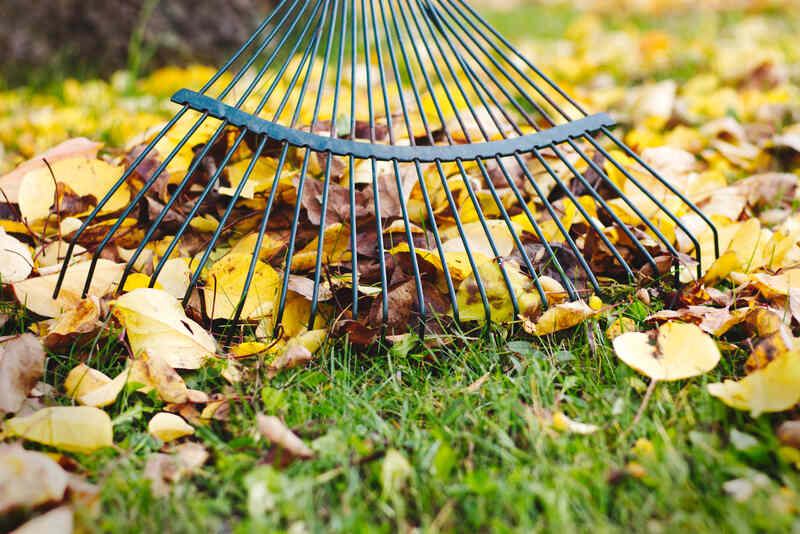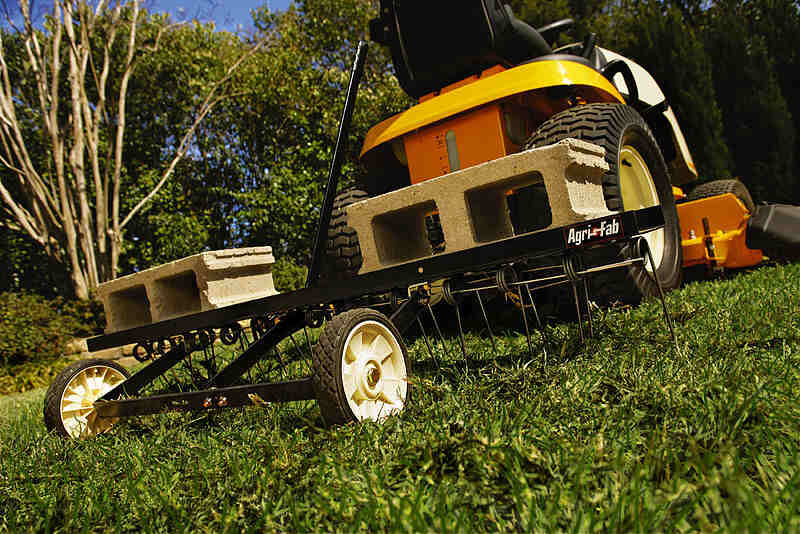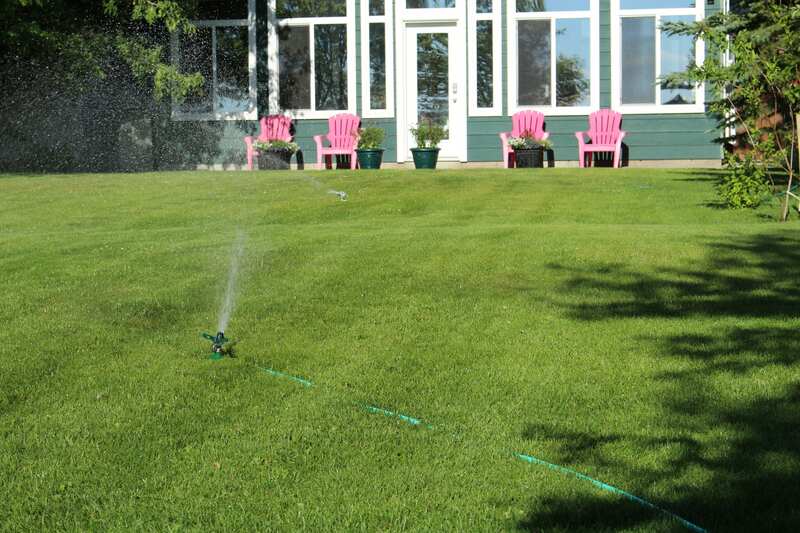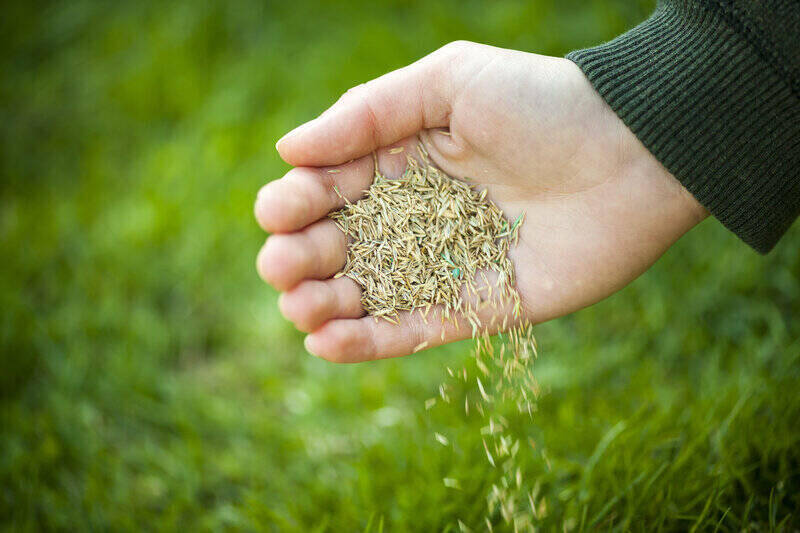
Spring fever is in the air! That means it’s time to get outside and start sprucing up that beloved lawn of yours. After months of slumber, your lawn needs some TLC to help it thrive this summer, and with this spring lawn care guide for Nashville, TN, you’ll have that lush green lawn you crave in no time.
11 Spring Lawn Care Tips for Nashville
Have you heard the song “Green, Green Grass of Home”? That’s what we’re aiming for in Nashville! Our quintessential Music City climate is tough on lawns, so Nashville front yards needn’t just appeal to the eye but also be impervious to the most extreme weather.
Here’s what you can do in spring to start your lawn’s new year off right and prepare the grass to survive the heat of summer.
1. Rake the Lawn

Know that dreaded winter debris that has been accumulating on your lawn while you hunker down indoors? Now’s the time to banish all those broken twigs, fallen acorns, and dry leaves. Clear out any mess in spring to give your grass room to breathe and uninhibited access to sunlight and water.
Raking also helps reduce thatch, which is an accumulation of dead and living organic matter between the grass and soil. Too much thatch can ruin your turf’s health, attract pests and diseases, block out nutrients, water, and oxygen from the soil, and lead to poor drainage.
While raking deeply can help get the job done, sometimes that’s just not enough to remove all the thatch. If your turf has an especially thick layer of thatch, then it might be time to power rake or dethatch (optimally during your grass’s active growing season).
2. Test Your Soil
Lawns in the transition zone – which includes Nashville – are not a piece of cake to care for. That’s why it’s tempting to douse your turf in fertilizer so that it can look lush and green year-round. But before you start popping bottles of fertilizer like champagne, consider testing your soil first.
Learning what vital nutrients your soil is lacking could make all the difference in giving your lawn the boost it needs. Not to mention, a soil test will let you in on the right fertilizer and soil amendments your grass needs to thrive all season.
A soil test will also let you know things like your soil’s nutrient deficiencies, pH imbalances, salt levels, and what other factors may be hindering healthy turf growth.
3. To Dethatch or Not to Dethatch?

When it comes to your lawn, deep cleansing is key – think of it like you would for your skin. Once a thatch layer reaches ½-inch thick or more, then dethatching the lawn with a power rake or dethatcher is a good idea.
Dethatching removes thick layers of dead organic matter on top of the soil, aerating it and opening up access to oxygen, water, and important nutrients. Only dethatch your lawn during its active growth season for optimal results.
The most common grasses in Nashville include both warm-season and cool-season grass types, which have different growing seasons:
- For warm-season turfgrass, like centipedegrass and Bermudagrass, dethatch during llate spring through early summer.
- For cool-season turfgrass, such as tall fescue and fine fescue, dethatch during fall when it’s already in recovery mode after the stressful summer.
4. Aeration? Not in Spring
An old adage says, “Timing is everything.” That’s definitely the case when it comes to aerating your lawn. It won’t work in your favor if you choose to perform this type of invasive lawn treatment too early.
You want to aerate your lawn during its active growth season—for warm-season turf, early summer is ideal, and for cool-season grasses, fall is the better option. When you aerate your soil, little air pockets are created throughout the ground that help to relieve compacted soil and give grass roots better access to oxygen, water, and nutrients.
You can use either a manual or powered aeration tool. Just wait until the right season if you want optimal results!
5. Seed & Fertilize Responsibly
As your lawn wakes up from its winter slumber, you may notice that it’s thinning or looking patchy in some areas. Rejuvenate your turf with a boost of new growth by planting quality grass seed this spring.
The best time to plant grass seed is generally when the soil temperatures are between 60-85 degrees Fahrenheit. The University of Tennessee Agricultural Extension Service recommends that homeowners should also apply nitrogen fertilizer in mid-April.
When it comes to cool-season grass types, like tall fescue and fine fescue, it’s best to wait till fall for planting—anytime from September to mid-October should suffice. Fall is also the optimal time for fertilizing cool-season grass, as all that summer stress depletes its nutrients.
Just keep in mind that if your turf does require fertilizer in spring, you should avoid applying any nitrogen fertilizer too early in the season. This can cause rapid growth, which isn’t healthy.
6. Mulching Is Not Optional

Mulch is your flower beds’ golden ticket to lush, vibrant growth and the prevention of pesky weeds. Not to mention, fresh mulch can also add life (literally) by providing your soil with nutrients, retaining moisture in the ground, and controlling erosion.
The best time of year to apply mulch in Nashville is mid to late spring, but make sure you wait until new growth is apparent so that sprouts won’t get suffocated. If your flower beds already have an existing layer of mulch from last winter, grab a rake and fluff it up before adding on the fresh layer so that it doesn’t mat. Two inches of mulch should be enough to reap the benefits of this essential soil protector.
7. Pre-Emergent Herbicide Can Help, Too
Tired of pulling out weeds for hours on end (and subsequently wanting to pull your hair out) with zero results? You may want to consider deploying a pre-emergent herbicide. It creates a chemical barrier that helps stop the germination of any unwanted weed seeds in their tracks.
However, be extra careful if you’re planning to overseed – many pre-emergent herbicides can also stop grass seed from germinating! Whenever applicable, consult the product label before applying it, and never apply it right before overseeding.
8. Water Thoughtfully

Unless Mother Nature intervenes with precipitation, your lawn will need a good soak once or twice a week to stay healthy and vibrant. During that time of day when evaporation is low (like in the very early mornings or late evenings), and humidity is high, your lawn will reap the most benefits from a dose of H2O.
One thing to keep in mind is how much water your grass needs per week. Most lawns need 1-1½ inches of water to reach a healthy level of hydration each week. That total includes both lawn irrigation and natural rainfall.
Look for signs that indicate your grass might need deep-rooted hydration. For instance, your lawn may be dehydrated if it fails the ‘footprint test.’ This means that if you walk across your turf, those footprints should bounce back pretty quickly. If they remain or disappear slowly, then you might need to add a few extra drops of water to your grass.
9. Mow, Mow, and Mow Again
Spring is the time to fire up that lawn mower! The height of your grass after being mowed should depend on its type and will range between half an inch to three inches.
Here are the recommended inch counts for Nashville’s different grass types:
- Bermudagrass — 1 to 1.5 inches
- Centipede — 2 inches
- Zoysia — ½ to 1 inch
- Fine fescue — 1½ to 2½ inches
- Kentucky bluegrass — 2 to 3 inches
- Perennial ryegrass — 1½ to 2½ inches
- Tall fescue — 1½ to 3 inches
Also, follow the one-third rule: Never remove more than a third of your grass’s height in a single cutting. Mowing as your lawn needs it is essential, especially in spring when you could be mowing more than once a week. To get the most out of your mower, periodic blade sharpening is a must. A sharp blade cuts cleanly and neatly, which gives the lawn an even appearance.
10. Check Your Gutters
The last thing you want is clogged gutters showing up your beautifully maintained lawn. Not only are they unsightly, but clogs can also damage your roof and even cause flooding if the water doesn’t effectively drain away from your home.
That being said, spring is an excellent time for your annual gutter cleaning. This can help ensure you don’t wind up with a nightmare on your hands when Nashville’s rainy season comes around.
11. Overseed Selectively

Overseeding is the process of adding new grass seed to your existing lawn. It can make your lawn appear denser and help the grass crowd out spring and summer weeds. Some grass types should be overseeded in spring, while others are better planted in fall.
When to overseed different types of turfgrass for optimal results:
- Bermudagrass – March through July
- Centipedegrass – March through July
- Zoysia – March through July
- Fine Fescue – September through Mid-October
- Kentucky Bluegrass – September through Mid-October
- Perennial Ryegrass – September through Mid-October
- Tall Fescue – September through Mid-October
The key is to overseed the lawn only during its active growth period, but it’s not always necessary. If you opt out of doing it this spring, your grass may be a little thinner and more vulnerable to weeds, but it won’t be in dire straits.
FAQ About Spring Lawn Care for Nashville
The transition zone of Nashville means warm and cool-season grasses can work well depending on which season it is. Cool-season grasses stay green throughout the winter, while warm-season grasses take over in the summer months.
There are a handful of variables that can cause your lawn to brown out. Issues like compaction, overwatering, pests, and disease can all take their toll on turf health if not properly addressed.
The best you can do is practice consistent maintenance throughout the year and diligently diagnose any potential issues early on.
The best time to sow your grass seed in Nashville is between late August and mid-October. This gives emerging plants the optimal weather for establishment, which is typically between 60°F – 75°F for cool-season grasses. Some cool-season grasses like fescues and ryegrass may be planted in the late winter or early spring.
With Bermudagrass and other warm-season grasses, the optimal range is between 80°F and 95°F; in this case, late spring to early summer is often recommended for planting.
Spring Fever or Lawn Care: What’s More Fun?
Let’s be honest, scraping up leaves and cleaning gutters isn’t the fun part of prepping for the new season. But hey, a few hours of labor can stock you with pride, knowing that those simple tasks will make your Music City lawn enviable. So, grab a rake and a lawn mower, and get to work!But if you don’t want to break a sweat, you can always hire a Nashville lawn care service to get the job done for you. Hmm, on second thought—maybe the peals of laughter and sweet merriment from an afternoon spent with friends is a better way to conquer those nagging lawn chores… after all, what would Nashville do without its eternal spring fever?
Main Image Credit: eakkarat rangram / Shutterstock